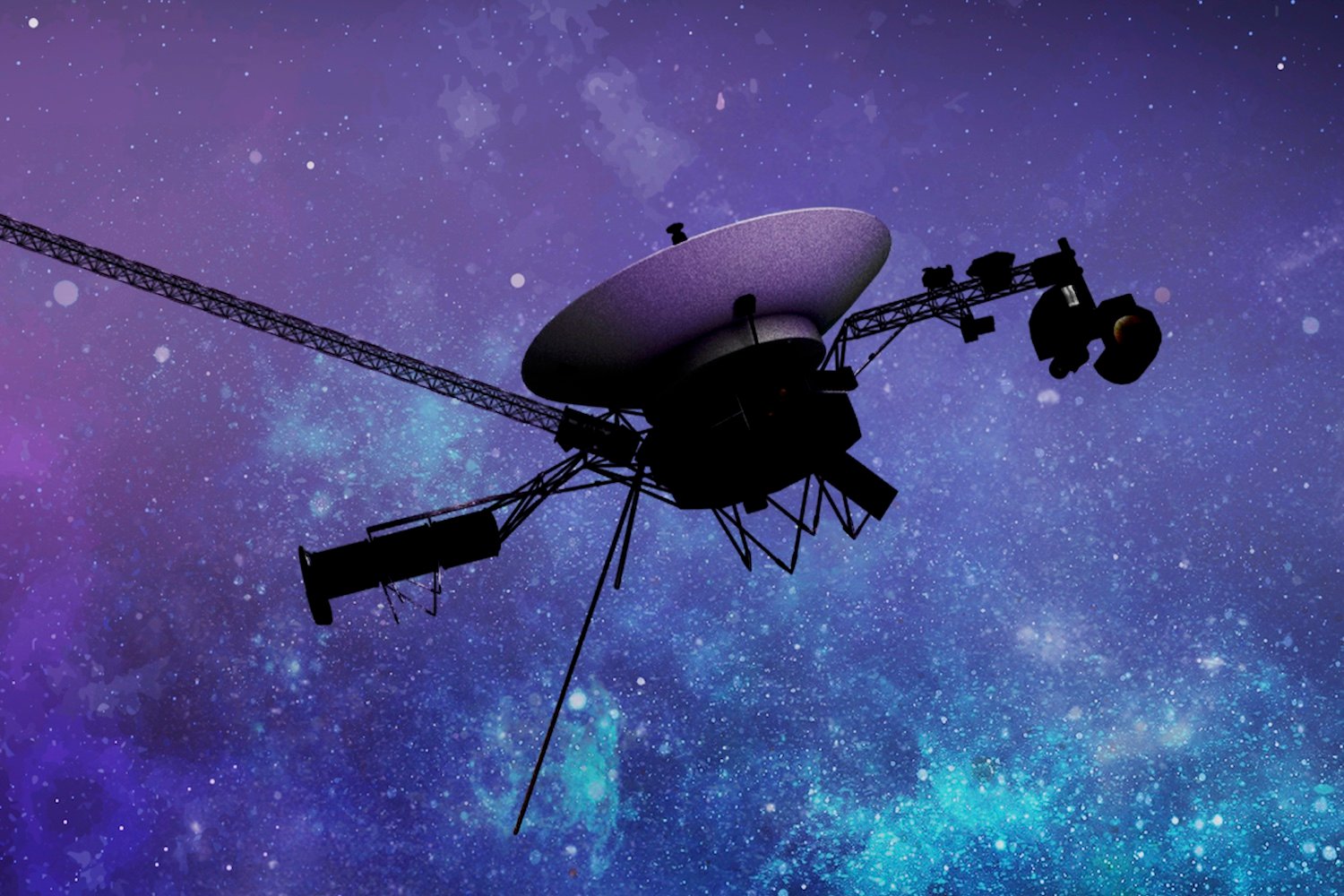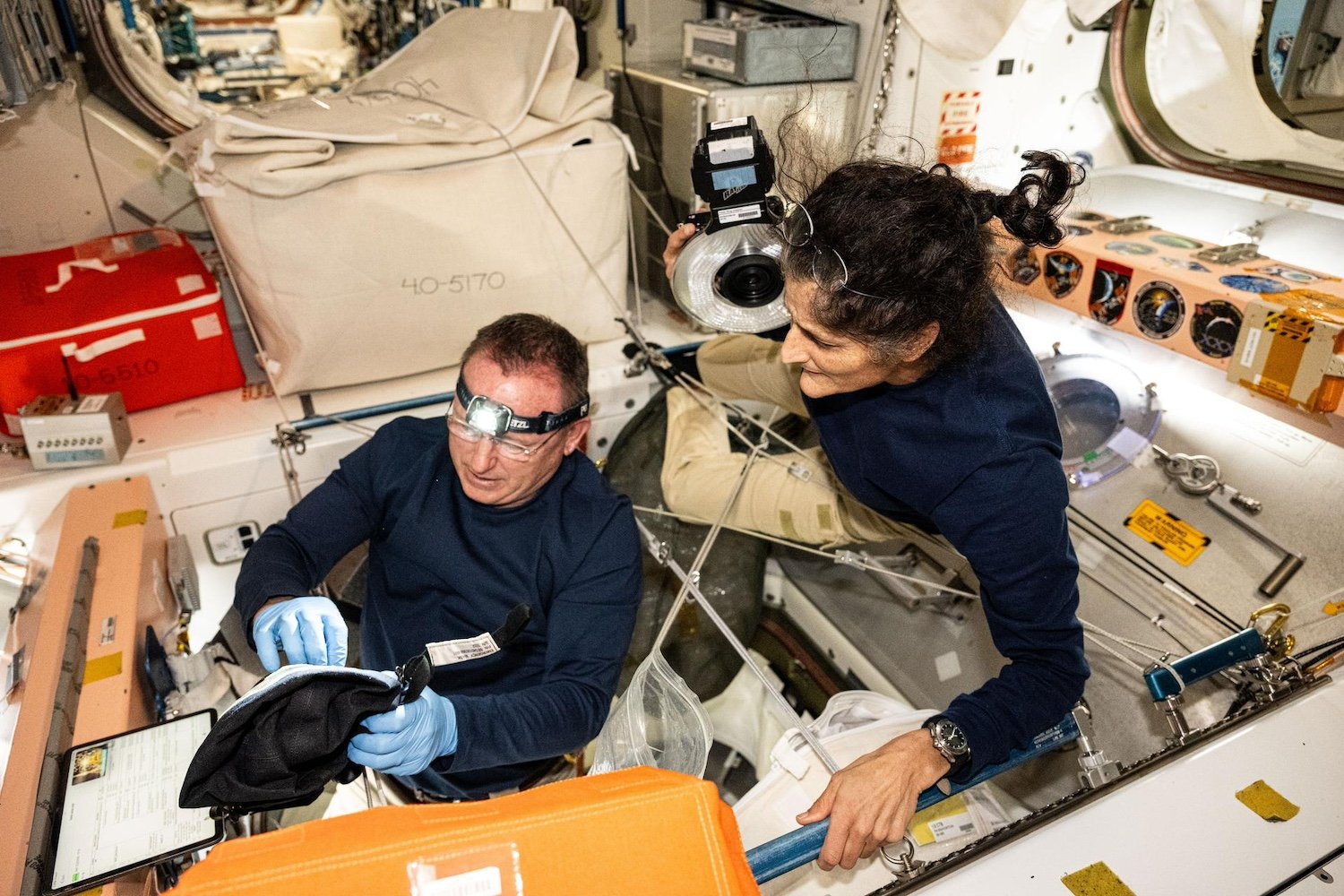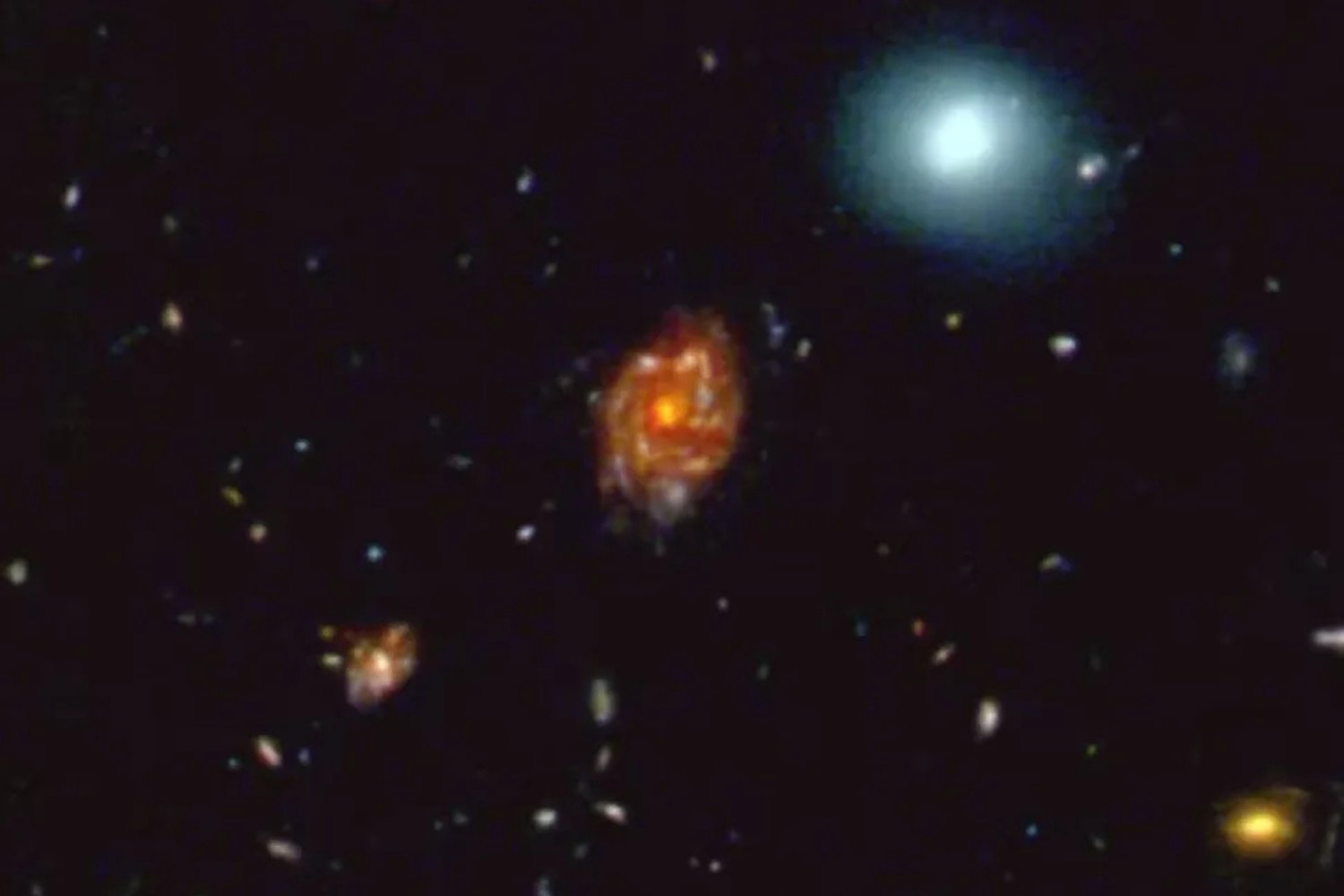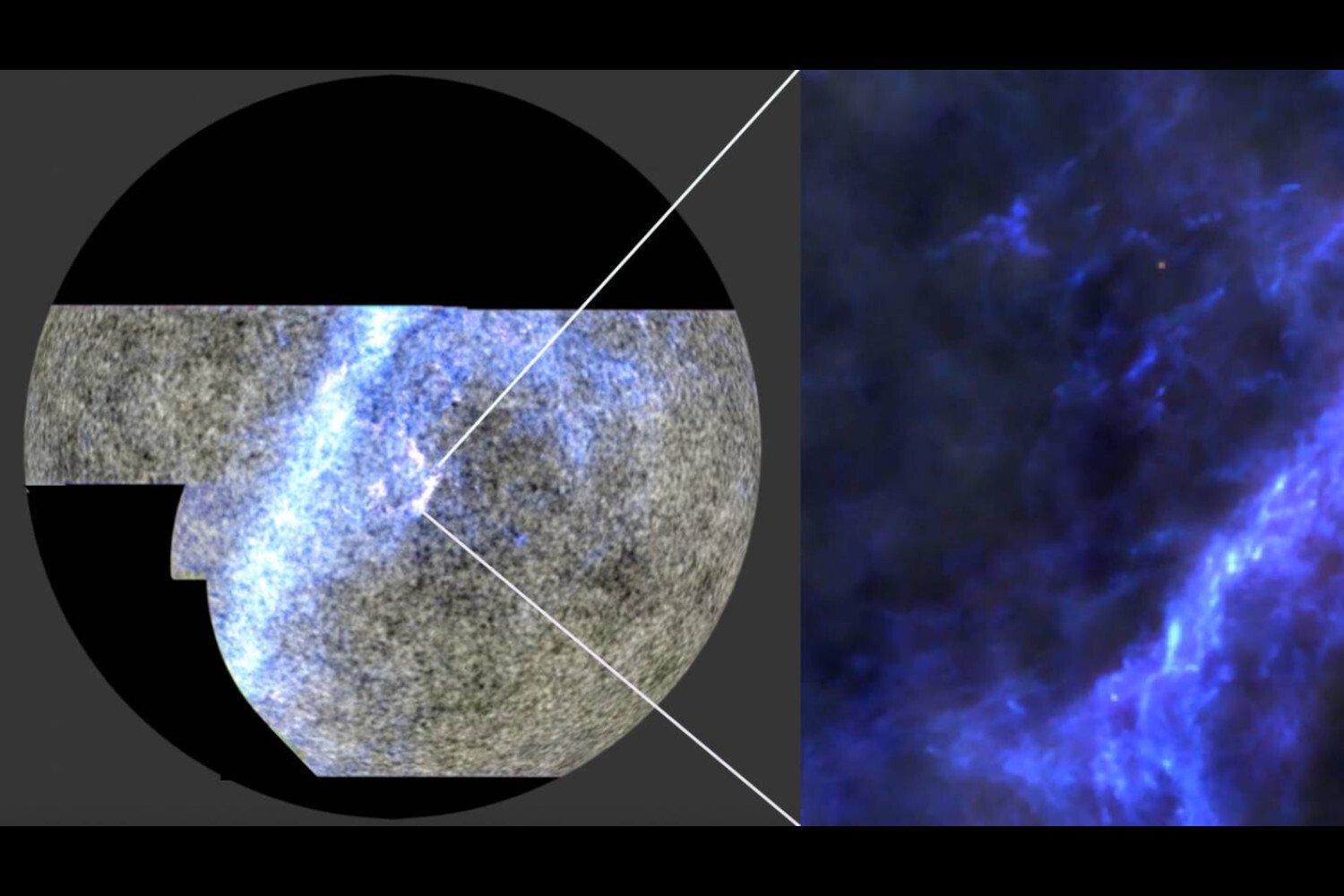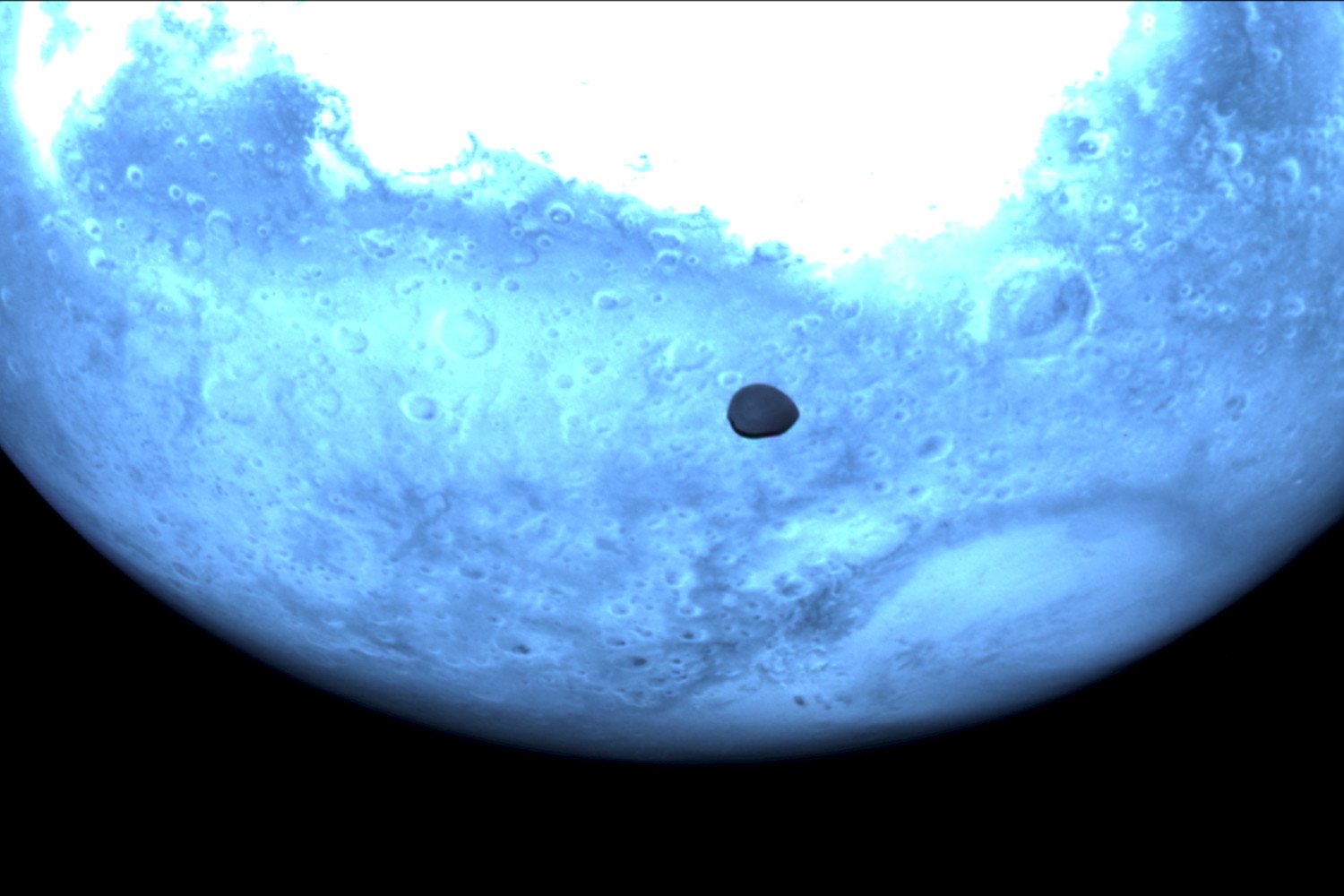The James Webb Space Telescope (JWST) has captured a breathtaking image of Herbig-Haro 49/50 (HH 49/50), a protostellar outflow located 630 light-years from Earth. This vibrant image showcases the telescope’s remarkable ability to observe celestial phenomena in unprecedented detail.
HH 49/50, previously nicknamed the “Cosmic Tornado,” is formed by powerful jets emanating from a young star. These jets propel vast amounts of material through space, generating shock waves that heat the surrounding interstellar medium. As this heated material cools, it emits light, creating the spectacular orange glow observed by Webb.
The enhanced resolution of JWST compared to its predecessor, the Spitzer Space Telescope, allows for a clearer understanding of HH 49/50’s intricate features. What Spitzer perceived as a blue smudge at the outflow’s tip is now distinctly identifiable as a spiral galaxy. This demonstrates Webb’s superior ability to resolve distant objects.
Utilizing its Near-Infrared Camera (NIRCAM) and Mid-Infrared Instrument (MIRI), Webb analyzed the distribution of hydrogen, carbon monoxide, and energized dust grains within the outflow. This data will be crucial for scientists to model the jet’s characteristics and its impact on the surrounding environment.
The suspected source of these energetic jets is a protostar named Cederblad 110 IRS4, situated approximately 1.5 light-years from HH 49/50. While the galaxy at the tip of HH 49/50 appears close in the image, it lies much farther away. Over millennia, the expanding outflow will seemingly eclipse the galaxy.
HH 49/50 is not the only Herbig-Haro object of interest. Other notable examples include HH 46/47, resembling a cosmic question mark, and HH 211, which Webb observed in 2023, revealing remarkably elongated jets extending approximately 1,000 light-years from Earth.
This latest image of HH 49/50 underscores the JWST’s transformative power to unveil the secrets of star formation and the dynamic interactions within our universe.





